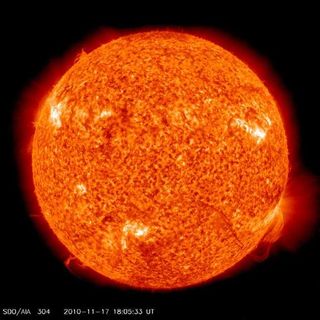What Does the Sun Burn?

For millennia, people have looked up to the sky and wondered about celestial bodies. The sparkling stars and fiery sun hold mystery and wonder. To astronomers, the sun is just another dying star, but to everyone else it’s a huge burning ball that gives heat, light, and life. So far so good.
But what is it burning? We all know that there is no air in space, and therefore no oxygen to burn. In our everyday experience, the only burning most of us are familiar with is fire combustion. But that is not the only type of reaction; the sun is indeed burning, but it is a nuclear reaction, not a chemical one.
The sun burns hydrogen — a lot of it, several hundred million tons per second. But don’t worry; there’s plenty more where that came from; by most estimates, the sun has enough fuel for about another five billion years.
Follow Life's Little Mysteries on Twitter @llmysteries. We're also on Facebook & Google+.
Sign up for the Live Science daily newsletter now
Get the world’s most fascinating discoveries delivered straight to your inbox.

Most Popular


